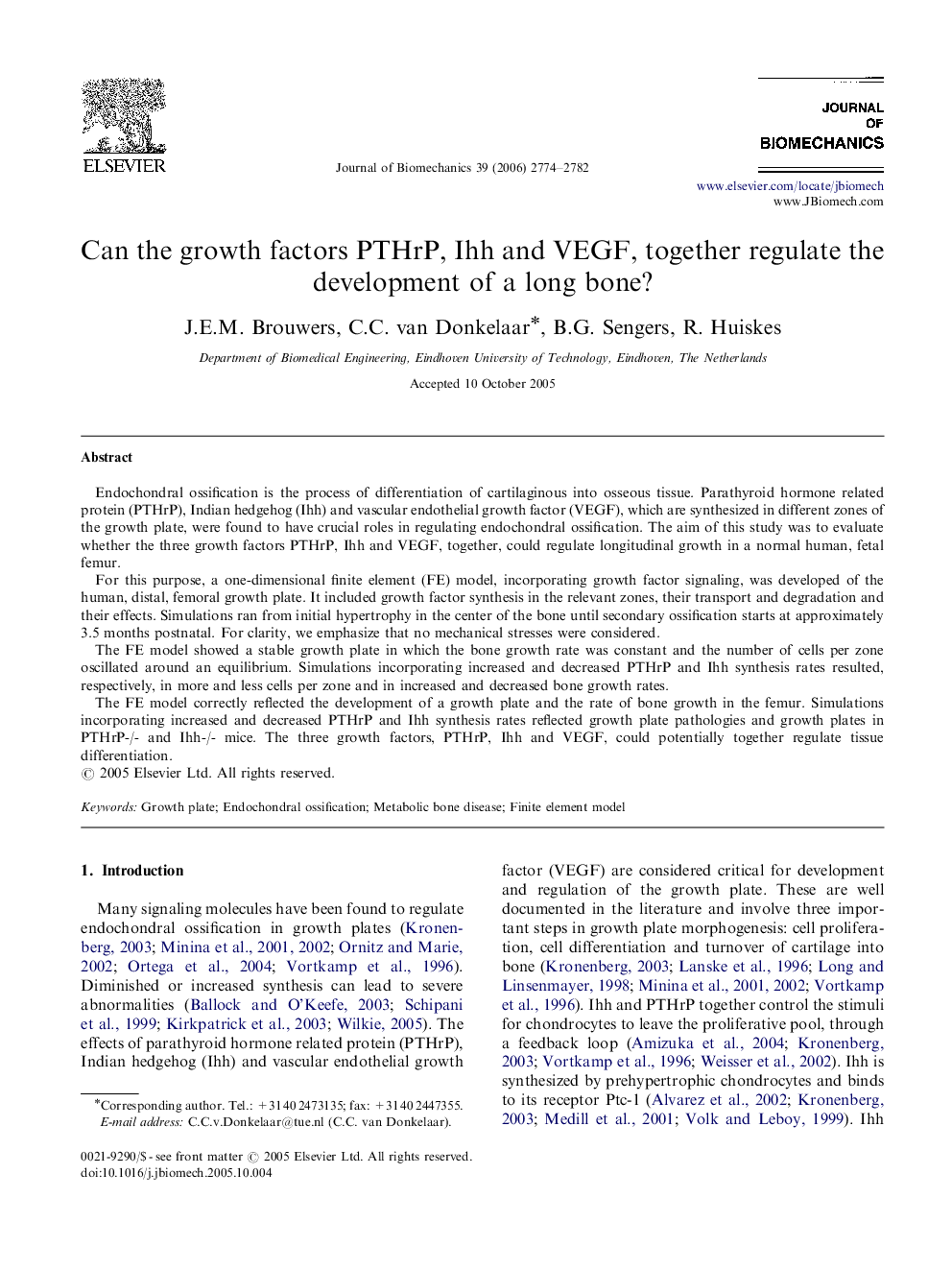| Article ID | Journal | Published Year | Pages | File Type |
|---|---|---|---|---|
| 874600 | Journal of Biomechanics | 2006 | 9 Pages |
Endochondral ossification is the process of differentiation of cartilaginous into osseous tissue. Parathyroid hormone related protein (PTHrP), Indian hedgehog (Ihh) and vascular endothelial growth factor (VEGF), which are synthesized in different zones of the growth plate, were found to have crucial roles in regulating endochondral ossification. The aim of this study was to evaluate whether the three growth factors PTHrP, Ihh and VEGF, together, could regulate longitudinal growth in a normal human, fetal femur.For this purpose, a one-dimensional finite element (FE) model, incorporating growth factor signaling, was developed of the human, distal, femoral growth plate. It included growth factor synthesis in the relevant zones, their transport and degradation and their effects. Simulations ran from initial hypertrophy in the center of the bone until secondary ossification starts at approximately 3.5 months postnatal. For clarity, we emphasize that no mechanical stresses were considered.The FE model showed a stable growth plate in which the bone growth rate was constant and the number of cells per zone oscillated around an equilibrium. Simulations incorporating increased and decreased PTHrP and Ihh synthesis rates resulted, respectively, in more and less cells per zone and in increased and decreased bone growth rates.The FE model correctly reflected the development of a growth plate and the rate of bone growth in the femur. Simulations incorporating increased and decreased PTHrP and Ihh synthesis rates reflected growth plate pathologies and growth plates in PTHrP-/- and Ihh-/- mice. The three growth factors, PTHrP, Ihh and VEGF, could potentially together regulate tissue differentiation.
